
Is music in the beats or the spaces between the beats?
For me, I think music are sounds that raise the spirit of the listener making them a part or observer of the human soul. BR
What is Music? A Deep Exploration Through the Voices of Great Modern Composers
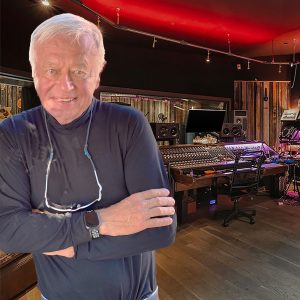
The question “What is music?” has captivated philosophers, theorists, and musicians for millennia. Yet perhaps no generation of composers has grappled with this fundamental inquiry more thoughtfully—or with greater urgency—than those working today. In our era of unprecedented technological advancement, genre-blurring creativity, and global cultural exchange, contemporary composers find themselves uniquely positioned to redefine and reimagine the very essence of musical art. Their perspectives, drawn from lived experience at the cutting edge of musical innovation, offer profound insights into music’s nature, purpose, and transformative power.
Rather than approaching this question through abstract philosophical frameworks, this exploration draws exclusively from the words, thoughts, and creative philosophies of today’s most visionary composers. From the minimalist pioneers who revolutionized musical thinking in the late 20th century to the boundary-pushing artists shaping the soundscape of the 21st century, these voices collectively offer a rich, multifaceted understanding of what music truly is—and what it can become.
Music as Communication and Human Connection
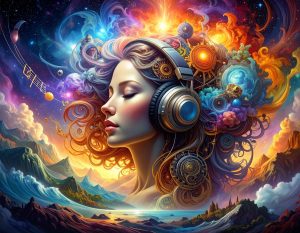 Perhaps the most fundamental insight emerging from contemporary composers is their understanding of music as a profound form of communication that transcends the limitations of spoken language. This perspective positions music not as an abstract art form but as an essential human technology for sharing experience, emotion, and meaning.
Perhaps the most fundamental insight emerging from contemporary composers is their understanding of music as a profound form of communication that transcends the limitations of spoken language. This perspective positions music not as an abstract art form but as an essential human technology for sharing experience, emotion, and meaning.
Jennifer Higdon, whose music receives over 250 performances annually and has earned both a Pulitzer Prize and multiple Grammy Awards, champions music’s communicative power with unwavering conviction. For Higdon, accessibility isn’t a compromise—it’s a responsibility. “When Higdon writes music,” notes one observer, “she insists that it communicates, that it’s capable of being understood and appreciated”. This philosophy stems from her belief that composers have an obligation to reach beyond academic circles and speak directly to human experience. She describes finding fans “in muddy-booted farmers and little girls who didn’t know someone who looks like their mom could write music for a symphony orchestra”, illustrating music’s capacity to transcend social and cultural boundaries.
Higdon’s approach represents a deliberate rejection of the mid-20th century academic tradition that privileged complexity over communication. As she explains, “when my music is described as ‘accessible,’ I don’t wince, I rejoice”. This stance reflects a broader movement among contemporary composers who view melody, harmony, and rhythm not as outdated conventions but as fundamental tools for human connection.
Anna Clyne, described by NPR as “a radical melodist with a painter’s eye,” similarly emphasizes music’s connective power. “If a piece is genuine,” she observes, “then we’re accessing something from within ourselves”. Yet Clyne’s perspective is more complex than simple self-expression. She describes her role as being “a bit like being a movie director”—someone who crafts experiences that may not directly reflect her inner world but instead serve the larger purpose of evoking “a range of” emotions and connections with audiences.
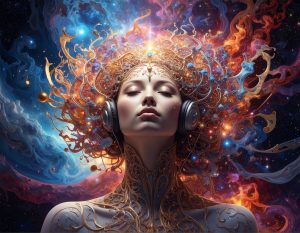 Clyne’s emphasis on melody as a vehicle for connection represents a significant shift from earlier modernist approaches. “There was a time not long ago in the classical music world when melody was” discouraged, notes one commentator, describing how “young composers making their way through academia were encouraged to leave hummable tunes behind”. Clyne’s success—she’s recognized as one of the most performed living composers—demonstrates the hunger audiences feel for music that speaks directly to emotional experience.
Clyne’s emphasis on melody as a vehicle for connection represents a significant shift from earlier modernist approaches. “There was a time not long ago in the classical music world when melody was” discouraged, notes one commentator, describing how “young composers making their way through academia were encouraged to leave hummable tunes behind”. Clyne’s success—she’s recognized as one of the most performed living composers—demonstrates the hunger audiences feel for music that speaks directly to emotional experience.
The collaborative nature of modern composition also reflects this communicative imperative. Caroline Shaw, the youngest composer ever to win the Pulitzer Prize, exemplifies this approach through her work with ensembles like Roomful of Teeth. Shaw’s reluctance to embrace the traditional “composer” label stems partly from her understanding that music-making is inherently collaborative. “For many younger musicians,” notes one observer, “the word composer has connotations that are antithetical to the collaborative nature of a lot of today’s music making”. Shaw prefers to identify as a “musician,” recognizing that contemporary musical creation often involves multiple voices and perspectives working together to achieve shared expressive goals.
This communicative understanding of music extends beyond traditional concert settings. These composers recognize that music functions as a social technology, creating temporary communities bound together by shared listening experiences. Shaw speaks of music’s ability to create “liminal space” where “a listener surrenders to a song’s evolution”, describing the kind of deep engagement that allows music to work its connective magic.
Music as Process, Structure, and Time
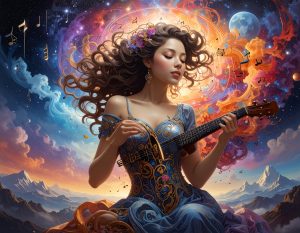 The minimalist movement, which emerged in the 1960s and continues to influence composers today, fundamentally reconceptualized music’s relationship to time, process, and structure. Rather than viewing music as a series of discrete events or emotional gestures, minimalist composers developed an understanding of music as unfolding process—a living system that reveals its beauty through gradual transformation and patient listening.
The minimalist movement, which emerged in the 1960s and continues to influence composers today, fundamentally reconceptualized music’s relationship to time, process, and structure. Rather than viewing music as a series of discrete events or emotional gestures, minimalist composers developed an understanding of music as unfolding process—a living system that reveals its beauty through gradual transformation and patient listening.
Steve Reich, one of minimalism’s founding figures and winner of the 2009 Pulitzer Prize, articulates this process-oriented approach with characteristic precision. Reich’s innovations with tape loops in works like “It’s Gonna Rain” (1965) and “Come Out” (1966) allowed him to “observe interlocking rhythmic patterns that he would later reproduce compositionally”. This discovery led to his understanding that music could function as a self-generating system, where simple materials create complex results through systematic transformation.
Reich’s famous piece “Music for 18 Musicians” exemplifies this approach. As music commentator Rob Kapilow explains, “This music has a motor… And once the motor starts, it doesn’t stop. Every single measure has this pulse”. The work demonstrates how minimalist process can create what Kapilow calls “an amazing rejection of the music of the first 50 years of the century”—a music based not on harmonic complexity or developmental logic but on the pure vitality of rhythmic process and gradual change.
Philip Glass, often paired with Reich as minimalism’s other founding voice, describes his approach as “music with repetitive structures”. Glass’s innovation came partly through his encounter with Indian music, particularly his work with Ravi Shankar. This exposure revealed to Glass that “Indian music builds rhythm(s) by adding smaller beats together”—an “additive” process fundamentally different from Western music’s tendency to divide time into predetermined units. Glass realized that “the music should flow naturally instead of forcing it into a rigid framework”.
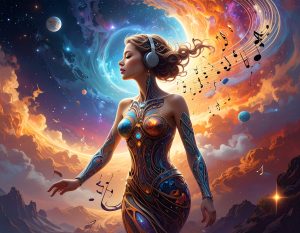 This process-oriented thinking extends beyond mere technique to philosophy. Glass understands his music as creating what one critic calls “a structure of feeling that oscillates among numerous points of music and contemporary history”. Rather than expressing predetermined emotions or telling specific stories, Glass’s music creates temporal frameworks within which listeners can experience their own psychological and emotional unfolding.
This process-oriented thinking extends beyond mere technique to philosophy. Glass understands his music as creating what one critic calls “a structure of feeling that oscillates among numerous points of music and contemporary history”. Rather than expressing predetermined emotions or telling specific stories, Glass’s music creates temporal frameworks within which listeners can experience their own psychological and emotional unfolding.
The influence of this process-based thinking can be seen in younger composers like Ólafur Arnalds, whose work with the Stratus system—”semi-generative, self-playing pianos”—represents a technological evolution of minimalist principles. Arnalds’s innovation allows human gesture to trigger algorithmic responses, creating music that is simultaneously controlled and unpredictable. As one observer notes, “the idea of music self-generated by algorithms may seem somewhat ominous,” yet listening to the results reveals that the music “is still ultimately guided by the composer”.
Nils Frahm offers perhaps the most philosophical perspective on process and structure. “Pieces always have a life,” he observes. “They change in the ear of the listener. When I write a piece and listen to it again after three years, then it sounds different”. This understanding positions musical works not as fixed objects but as living entities that continue evolving through repeated encounters. Frahm’s approach embraces incompletion: “I like it when things are uncompleted. I want to leave some space for the listener and invite them to participate”.
This process-oriented approach fundamentally challenges traditional concepts of musical authorship and meaning. Rather than viewing composers as sole creators of fully-formed artistic statements, these perspectives suggest that music emerges through collaborative processes involving composers, performers, technologies, and listeners working together across time.
Music as Spiritual Practice and Transcendence
Among contemporary composers, few have articulated music’s spiritual dimensions as profoundly as Arvo Pärt, whose tintinnabuli technique represents one of the most distinctive compositional innovations of the late 20th century. Pärt’s approach to composition goes far beyond technical method—it embodies what he calls “spiritual fasting,” an “escape into voluntary poverty” filled with “humility and prayerful concentration”.
 Pärt’s tintinnabuli system, named after the Latin word for “little bells,” seeks to “reduce all possible parameters of musical means to a certain basic level, to the primordial elements of the language of sound”. This reductive approach might seem like mere aesthetic choice, but for Pärt it represents a profound spiritual discipline. He describes his creative philosophy as being comparable to “spiritual fasting”, suggesting that the composer must strip away everything non-essential to reveal music’s sacred core.
Pärt’s tintinnabuli system, named after the Latin word for “little bells,” seeks to “reduce all possible parameters of musical means to a certain basic level, to the primordial elements of the language of sound”. This reductive approach might seem like mere aesthetic choice, but for Pärt it represents a profound spiritual discipline. He describes his creative philosophy as being comparable to “spiritual fasting”, suggesting that the composer must strip away everything non-essential to reveal music’s sacred core.
The spiritual dimension of Pärt’s work extends to his relationship with text and language. “The words write my music,” he states, indicating that his compositional process involves deep listening to the inherent musicality of sacred texts. This approach reflects what one scholar describes as “the original Christian way of thinking, which has been preserved more purely in the Orthodox Church”. Pärt doesn’t interpret texts so much as allow them to reveal their intrinsic musical nature.
This spiritual understanding of music creates what Pärt calls the “spirit of music”—something that transcends technical execution or aesthetic effect. As one observer notes, “Even the name tintinnabuli is something more than just a metaphor for sound. It is Pärt’s unique creative philosophy”. The technique serves not merely as a compositional system but as a form of musical meditation that seeks to create sacred space through sound.
Gustav Holst’s earlier observation that “Music, being identical with heaven, isn’t a thing of momentary thrills, or even hourly ones. It’s a condition of eternity” finds contemporary expression in composers who understand music as a technology for transcendence. This perspective views music not as entertainment or even communication in the conventional sense, but as a means of accessing states of consciousness that transcend ordinary temporal experience.
Max Richter articulates a related but distinct understanding of music’s transcendent potential. His approach, which he describes as “documentary music”, seeks to create what he calls “memory spaces” where “various texts and words and phrases could float, so to speak, in musical space”. For Richter, music functions as a technology for processing collective memory and trauma. “The listener would enter into that space the way you might enter into, let’s say, a big cathedral in Europe and just be alone and experience your emotions and your thoughts as they unite with these musical objects”.
This understanding positions music as a form of temporal architecture—not just organized sound, but organized time that creates specific psychological and spiritual environments. Richter’s eight-and-a-half-hour piece “Sleep” represents perhaps the most literal embodiment of this approach, creating a musical environment designed to accompany and enhance one of humanity’s most fundamental altered states of consciousness.
Kaija Saariaho brings a different but related perspective to music’s transcendent potential through her work with spectral composition and electronic manipulation. Saariaho describes how “all the senses are somehow present when I compose”, noting that “certain sounds, or certain kinds of music, can have even a specific smell”. Her synesthetic approach to composition suggests that music can activate forms of perception that transcend the purely auditory, creating multi-sensory experiences that border on the mystical.
Saariaho’s emphasis on dreams as compositional inspiration further demonstrates music’s connection to transcendent states. “Dreams are super-important for me,” she explains. “I spend time writing down my dreams because I want to understand them; I think they are messages from myself to myself”. This approach positions musical composition as a form of communication between different levels of consciousness, using sound to translate the logic of dreams into waking experience.
The spiritual dimension of contemporary composition also manifests in composers’ relationships to silence and space. John Cage’s famous assertion that “The purpose of music, as it always was, is to bring about an enjoyment of the life that we’re living”] points toward an understanding of music as spiritual practice rather than aesthetic object. This perspective sees musical listening as a form of heightened attention that can transform ordinary experience into something approaching the sacred.
Music as Sound, Color, and Synesthetic Experience
Contemporary composers have developed increasingly sophisticated understandings of music’s relationship to other sensory modalities, challenging traditional boundaries between the auditory and visual realms. This synesthetic approach to composition reflects both technological advancement and a deeper understanding of how human perception actually functions in musical experience.
Kaija Saariaho stands as perhaps the most articulate proponent of this synesthetic approach. “For me, the visual and musical worlds are one,” she states. “Different senses, colour gradations, textures, tones of light and even aromas become mixed with sounds in my thoughts”. This integration of sensory modalities isn’t merely metaphorical for Saariaho—it represents a fundamental aspect of her compositional process.
Saariaho’s development of spectral composition techniques, learned during her time at IRCAM in Paris, provides a technical foundation for this synesthetic approach. Spectralism “takes the entire spectrum of sound from pure tones to white noise as the raw material and arrives at new compositional results by analysing the components of the sound”. This analytical approach allows composers to work with the actual physical properties of sound—its harmonic content, its evolving spectrum, its textural qualities—rather than abstract theoretical relationships.
The synesthetic dimension of Saariaho’s work extends to her understanding of musical time and space. She describes seeking to create “splendid places where suddenly we leave the music and we step out of time, into the musical space”. This spatial metaphor for musical experience suggests that composers can create acoustic environments with their own internal geography, places where listeners can “dwell” rather than simply observe.
Anna Clyne similarly emphasizes the visual dimension of musical experience. Described as having “a painter’s eye”, Clyne frequently draws inspiration from visual art in her compositional process. Her piece “Color Field” was inspired by the work of Mark Rothko, while “ATLAS” drew from “a portfolio of work by Gerhard Richter”. For Clyne, visual art provides not just inspiration but actual structural models for musical composition.
Clyne’s approach to orchestration reflects this visual sensibility. She speaks of trying to “evoke a certain thing” that may not reflect her personal emotional state but rather serves the larger goal of creating specific sensory experiences. This approach positions the composer as a kind of sonic painter, using instrumental colors and textures to create musical canvases that listeners can experience visually as well as auditorily.
Ólafur Arnalds brings a distinctly contemporary perspective to this synesthetic approach through his integration of electronic and acoustic elements. Arnalds describes his music as bridging “polarities”—”the electronics with the acoustic instruments, the natural world with the human world, and the big ideas of life with the personal and intimate”. His Stratus system, which uses algorithms to control “self-playing, semi-generative player pianos”, creates sonic textures that listeners often describe in visual terms.
The visual dimension of Arnalds’s work extends beyond metaphor to actual multimedia collaboration. His “Island Songs” project involved creating both musical compositions and accompanying films in seven different Icelandic locations, demonstrating how contemporary composers increasingly work across media boundaries. Each piece became both a musical composition and a visual document, with the landscape itself serving as both inspiration and collaborator.
 Max Richter articulates perhaps the most sophisticated understanding of music’s relationship to memory and mental imagery. His concept of “documentary music” positions sound as a technology for preserving and transmitting not just auditory experience but complete sensory and emotional environments. Richter’s film and television scores demonstrate this approach in action, using music to create what he calls “specific colours” that are “specific to the world of that film”.
Max Richter articulates perhaps the most sophisticated understanding of music’s relationship to memory and mental imagery. His concept of “documentary music” positions sound as a technology for preserving and transmitting not just auditory experience but complete sensory and emotional environments. Richter’s film and television scores demonstrate this approach in action, using music to create what he calls “specific colours” that are “specific to the world of that film”.
Richter’s process involves “making sample libraries or new instruments” for each project, creating unique sonic palettes that function like visual color schemes. This approach recognizes that music doesn’t just accompany visual media—it actually shapes how we see and remember what we’re watching.
The synesthetic approach to contemporary composition also reflects deeper philosophical questions about the nature of perception itself. Thomas Adès describes his compositional process as fundamentally “surrealistic,” explaining that “all my music could be described as surrealistic; to me that’s normal, it’s the way I think”[23]. Like surrealist visual artists, Adès takes “recognizable everyday elements and presented them in an original way”, creating musical environments that feel simultaneously familiar and transformed.
This synesthetic understanding of music challenges traditional hierarchies between the senses and suggests that musical experience is fundamentally multi-modal. Rather than existing in a purely auditory realm, music engages the full spectrum of human perception, creating experiences that can be simultaneously heard, seen, felt, and even smelled or tasted in the imagination.
Music as Technology and Innovation
Contemporary composers have developed unprecedented relationships with technology, viewing it not as a tool for realizing predetermined artistic visions but as a creative collaborator that expands the very definition of what music can be. This technological integration represents more than mere adoption of new instruments—it reflects a fundamental reconceptualization of musical creation as a process that emerges from human-machine collaboration.
Björk, one of the most innovative electronic artists of the past three decades, offers perhaps the most direct refutation of technology’s supposed limitations. “I find it so amazing when people tell me that electronic music has no soul,” she states. “You can’t blame the computer. If there’s no soul in the music, it’s because nobody put it there”. This perspective positions technology as a neutral creative medium whose artistic potential depends entirely on the imagination and intention of its human operators.
Björk’s insight challenges persistent romantic notions about the relationship between technology and artistic authenticity. Rather than viewing electronic instruments as somehow less “real” than acoustic ones, she recognizes that all musical instruments are technologies—evolved solutions to the problem of organizing sound in time. The fact that some instruments involve computers while others involve wood and metal is, from this perspective, merely a difference in engineering approach rather than artistic legitimacy.
Kaija Saariaho’s pioneering work at IRCAM in Paris demonstrates how technology can fundamentally expand compositional possibilities. Her development of “computer-assisted composition” techniques and “fluency in working on tape and with live electronics” allowed her to create musical textures impossible to achieve through acoustic means alone. Saariaho’s approach shows how technology can serve as both analytical tool and creative medium, allowing composers to examine the internal structure of sounds while simultaneously creating new sonic possibilities.
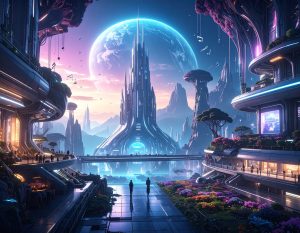 Saariaho describes using “two systems for harmony and rhythm, the FORMES system and the CRIME system” to assist her compositional process[26]. These computer programs don’t compose music automatically but rather help her explore harmonic and rhythmic possibilities that might be difficult to imagine through traditional means. This human-computer collaboration creates what she calls “detailed notation using harmonics, microtonaly and detailed continuum of sound extending from pure tone to unpitched noise”.
Saariaho describes using “two systems for harmony and rhythm, the FORMES system and the CRIME system” to assist her compositional process[26]. These computer programs don’t compose music automatically but rather help her explore harmonic and rhythmic possibilities that might be difficult to imagine through traditional means. This human-computer collaboration creates what she calls “detailed notation using harmonics, microtonaly and detailed continuum of sound extending from pure tone to unpitched noise”.
Ólafur Arnalds represents the next generation of technologically-integrated composition through his development of the Stratus system. This innovation uses “a pair of semi-generative, self-playing pianos controlled by algorithms” that “react to his playing, generating harmonic and rhythmic responses in real-time”. The result transforms each performance into what Arnalds describes as “a duet between human and machine”.
The Stratus system exemplifies how contemporary composers are moving beyond simple human-tool relationships toward genuine collaboration with intelligent systems. Rather than using technology to execute predetermined compositional decisions, Arnalds creates systems that can respond, improvise, and contribute their own musical ideas to the creative process. This approach recognizes technology’s potential to serve as creative partner rather than mere instrument.
Nils Frahm articulates a particularly nuanced understanding of technology’s role in contemporary composition. “For me there is no dogma about ‘digital sucks’ or ‘analogue is great,'” he explains. “It’s more about the courage of using each individual instrument or setup for what it is good for”. This pragmatic approach recognizes that different technologies excel in different domains—computers for “all the glitchiness, beats and cuts,” while acoustic instruments remain superior for their own unique qualities.
Frahm’s approach to recording technology similarly reflects this non-dogmatic integration of old and new techniques. He describes creating “Screws” with “one microphone, an old condenser, fed through an EMT stereo reverb and that was it”, while other pieces might involve extensive digital processing. This flexibility allows him to match technological approaches to artistic needs rather than being constrained by either traditional or modern orthodoxies.
Max Richter represents perhaps the most sophisticated integration of technological and traditional compositional approaches. His work combining “swelling strings with electronics and spoken word”[28] creates what one observer calls a synthesis that “takes the best of what the classical tradition has to offer and combines it with everything that’s great about modern music”. Richter’s process involves both “pen and paper” composition and “manipulating samples and found sound”, recognizing that contemporary musical creation often requires multiple technological approaches working in concert.
Richter’s eight-and-a-half-hour piece “Sleep” exemplifies how technology can enable entirely new musical forms. The work’s extreme duration and specialized recording techniques create what Richter calls a “neuroscientific” approach to composition, designed to interact with the brain’s sleep cycles. This represents a form of musical composition that would be impossible without contemporary understanding of both neuroscience and audio technology.
The technological integration evident in contemporary composition also reflects broader changes in how music is distributed, consumed, and experienced. Anna Clyne’s work with her “Augmented Orchestra,” developed with sound designer Jody Elff, “explores the use of technology” to create new performance possibilities. This approach recognizes that technology doesn’t just change how music is made—it changes how music is heard and what kinds of musical experiences are possible.
Music as Transformation and Metamorphosis
 Contemporary composers increasingly understand their art as fundamentally concerned with transformation—not just the development of musical materials through time, but the capacity of music to transform consciousness, memory, and social reality. This perspective views composition as a practice of creative metamorphosis, where familiar elements are reconstituted into entirely new forms of experience.
Contemporary composers increasingly understand their art as fundamentally concerned with transformation—not just the development of musical materials through time, but the capacity of music to transform consciousness, memory, and social reality. This perspective views composition as a practice of creative metamorphosis, where familiar elements are reconstituted into entirely new forms of experience.
Thomas Adès provides perhaps the most explicit articulation of this transformative approach. Drawing on surrealist principles, Adès explains that “all my music could be described as surrealistic; to me that’s normal, it’s the way I think. I try to see beyond the physical to think how it might be altered”[23]. His compositional method involves taking recognizable musical elements—”a chaconne, a waltz or a tango”—and remaking them “in a wholly original way”.
This transformative approach reflects Adès’s understanding that music is “made of air” and therefore “might be the freest of all the art forms”. The abstract nature of musical material allows composers unprecedented freedom to transform and recombine elements in ways that would be impossible in more concrete media. “When you want to turn one object into another,” Adès observes, “music is completely plastic in that way; you can transform things at will”.
Adès’s opera “The Exterminating Angel” demonstrates this transformative approach in action. Drawing from Luis Buñuel’s surrealist film, Adès creates “soundscapes from the oppressive atmosphere” of the original work while using “the ostinato technique… to represent the passage where the protagonists enter a room which they then cannot leave”. The music doesn’t simply illustrate the film’s narrative—it transforms cinematic experience into purely musical terms while maintaining the psychological and dramatic essence of the original.
Max Richter employs transformation in a different but equally profound way through his concept of “documentary music”. Rather than transforming existing musical materials, Richter transforms historical and personal memory into sonic experience. His album “The Blue Notebooks,” created in response to the Iraq War, demonstrates how musical composition can transform political and historical events into intimate artistic statements.
Richter’s approach involves creating what he calls “memory spaces” where “the various texts and words and phrases could float, so to speak, in musical space”. This technique transforms traumatic historical events into environments for contemplation and healing. The listener enters these spaces “the way you might enter into, let’s say, a big cathedral in Europe and just be alone and experience your emotions and your thoughts as they unite with these musical objects”.
The transformative dimension of Richter’s work extends to his treatment of existing classical repertoire. His “recomposed” version of Vivaldi’s “Four Seasons” demonstrates how contemporary composers can transform canonical works into entirely new artistic statements. Rather than simply arranging or updating older music, Richter extracts essential elements and reconstitutes them according to contemporary aesthetic and emotional needs.
John Adams represents another approach to musical transformation through his development of what he calls “post-minimalist” composition. Adams describes his evolution from strict minimalist techniques toward a more expressive musical language as a form of continuous transformation. “I’m delighted to maybe be the first composer for whom the crisis of accessibility is a major philosophical issue,” Adams states. His solution involves transforming minimalist techniques into vehicles for emotional and narrative expression.
Adams’s “Harmonielehre” exemplifies this transformative approach. The work takes its title from Schoenberg’s influential treatise while transforming minimalist processes through the “filtered” influence of “fin de siècle composers, from Debussy to Sibelius to Mahler”. The resulting music maintains minimalism’s rhythmic vitality while incorporating the harmonic richness and emotional directness of late Romantic composition.
Caroline Shaw’s approach to transformation operates through what she describes as “discovering through sound.” Her Pulitzer Prize-winning “Partita for 8 Voices” transforms traditional baroque forms into contemporary a cappella writing that incorporates extended vocal techniques and electronic processing. Shaw’s method involves “tricking herself into the mindset of a beginner”[4], allowing fresh perspectives to transform familiar musical materials.
Shaw’s transformation of string quartet writing in her album “Orange” demonstrates how contemporary composers can revitalize historical forms through new approaches to rhythm, harmony, and texture. Rather than abandoning traditional structures, Shaw finds ways to make them “breathe” with contemporary sensibility while maintaining their essential characteristics.
Arvo Pärt’s tintinnabuli technique represents perhaps the most radical form of musical transformation—the reduction of complex musical languages to their essential elements. Pärt describes this process as “spiritual fasting”, a disciplined stripping away of non-essential materials to reveal music’s fundamental nature. The resulting compositions transform both performer and listener consciousness through their extreme economy of means.
The transformative potential of contemporary composition extends beyond individual works to broader questions of musical culture and social function. These composers recognize that their work doesn’t simply create new pieces—it transforms how audiences understand music’s possibilities and how musical culture evolves. Their innovations create new contexts for musical experience while transforming existing musical traditions for contemporary use.
Music as Living Language
The perspectives gathered from these contemporary composers reveal music to be far more than organized sound or aesthetic entertainment. Instead, they describe a living language—one that continues evolving through each performance, each listening, each creative encounter. This understanding positions music not as a collection of fixed objects but as an ongoing process of meaning-making that involves composers, performers, and listeners in collaborative acts of creation and discovery.
Nils Frahm perhaps captures this most directly when he observes that “pieces always have a life. They change in the ear of the listener”. This recognition that musical works exist not as static entities but as dynamic relationships challenges traditional concepts of artistic ownership and completion. Music, from this perspective, emerges through encounter rather than existing independently of human engagement.
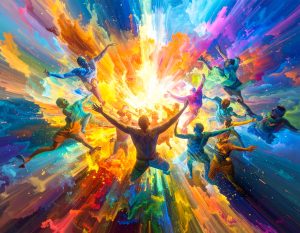 The technological innovations explored by composers like Ólafur Arnalds and Kaija Saariaho suggest that this living quality of music is expanding rather than diminishing in our digital age. Rather than replacing human creativity, technology creates new possibilities for musical collaboration and transformation. The Stratus system’s ability to generate “harmonic and rhythmic responses in real-time” exemplifies how technology can participate in music’s living evolution rather than simply documenting it.
The technological innovations explored by composers like Ólafur Arnalds and Kaija Saariaho suggest that this living quality of music is expanding rather than diminishing in our digital age. Rather than replacing human creativity, technology creates new possibilities for musical collaboration and transformation. The Stratus system’s ability to generate “harmonic and rhythmic responses in real-time” exemplifies how technology can participate in music’s living evolution rather than simply documenting it.
The spiritual and transcendent dimensions articulated by composers like Arvo Pärt and Max Richter reveal music’s capacity to create what we might call “temporal sanctuaries”—spaces within time where ordinary consciousness can be transformed through sustained attention to organized sound. These composers understand music not as escape from reality but as intensified engagement with the deeper structures of experience.
Perhaps most importantly, the emphasis on communication and accessibility championed by composers like Jennifer Higdon and Anna Clyne demonstrates music’s essential function as a technology for sharing experience across individual, cultural, and temporal boundaries. Their success in reaching diverse audiences while maintaining artistic integrity suggests that the supposed conflict between accessibility and sophistication may be a false dichotomy.
The synesthetic approaches developed by composers like Kaija Saariaho and Thomas Adès expand our understanding of what musical experience can encompass. By recognizing music’s connections to visual, tactile, and even olfactory experience, these composers point toward forms of artistic creation that engage human perception more completely than traditional approaches.
Caroline Shaw’s reluctance to embrace the “composer” label reflects a broader recognition among contemporary musicians that musical creation has become increasingly collaborative and interdisciplinary. The boundaries between composition, performance, improvisation, and listening are becoming more fluid, creating new possibilities for musical participation and meaning-making.
These contemporary voices collectively suggest that music functions as humanity’s most sophisticated technology for creating, sharing, and transforming consciousness. Unlike other art forms that work primarily through representation or narrative, music operates directly on temporal experience, creating what Max Richter calls “memory spaces”where past, present, and future can coexist and interpenetrate.
The question “What is music?” thus receives not a single answer but a constellation of responses that illuminate different facets of musical experience. Music emerges from these perspectives as simultaneously ancient and utterly contemporary, deeply personal and universally communicative, technologically mediated and essentially human.
As these composers continue pushing the boundaries of musical possibility, they ensure that music remains what Kaija Saariaho calls “fantastically flexible”—a medium capable of finding “its place” in whatever cultural contexts emerge. Their work demonstrates that music’s essential nature lies not in any particular style, technique, or technology, but in its capacity to transform both creators and listeners through the shared experience of organized time.
In an era of rapid change and cultural fragmentation, these composers offer music as a renewable resource for meaning-making, connection, and transformation. Their perspectives collectively suggest that music’s future lies not in nostalgia for past achievements but in continued exploration of sound’s capacity to reveal new dimensions of human experience. Through their innovations, contemporary composers ensure that music remains what John Cage called “an enjoyment of the life that we’re living”—a living practice of creative attention that can transform ordinary time into extraordinary experience.




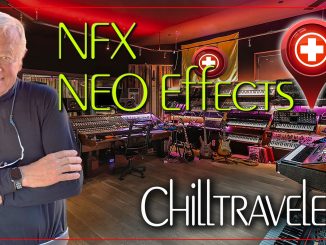
Be the first to comment